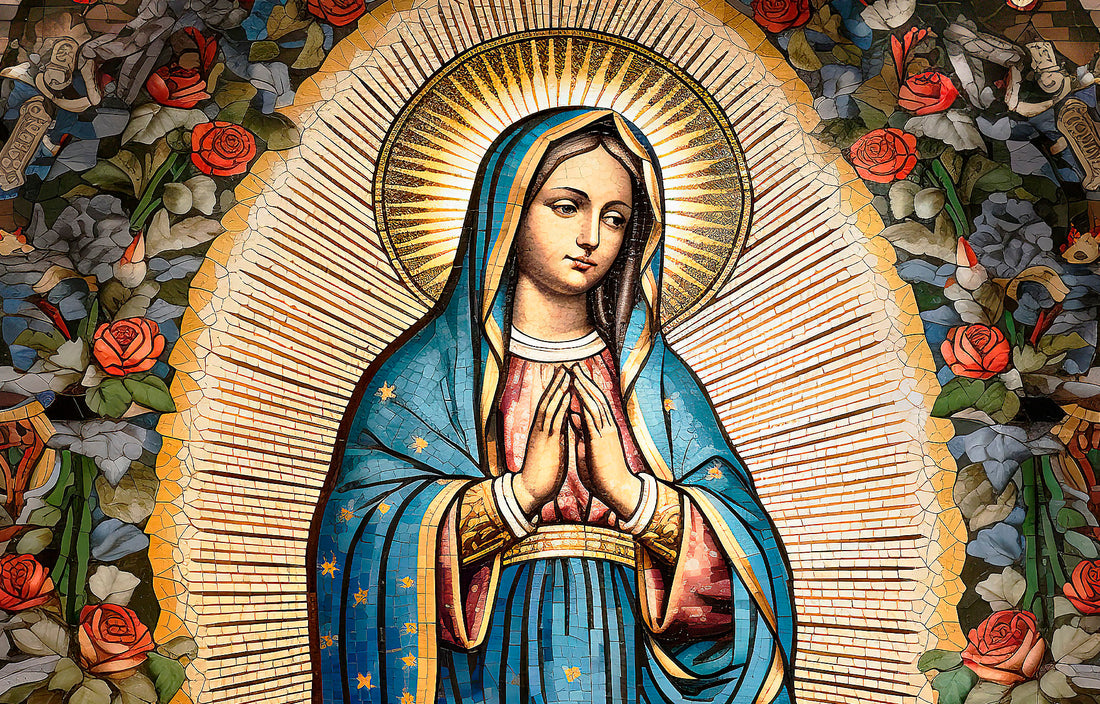The veneration of Our Lady of Guadalupe holds profound significance within Mexican history and the Catholic Church, stemming from the miraculous event where the Virgin Mary appeared to Juan Diego near Mexico City in 1531. This extraordinary occurrence sparked intense devotion to the Madonna of Guadalupe among both the Mexican populace and within the Catholic Church.
Unveiling the Apparition's Tale
The origins of this apparition trace back to the period between 1428 and 1521 when the Aztec Empire flourished in central Mexico, consolidating three city-states. In 1521, the conquest of the Aztec capital by Hernán Cortés and the Spaniards marked the advent of New Spain. Subsequently, Franciscan missionaries arrived with the aim of disseminating the Gospel among the natives, initially met with skepticism but ultimately resulting in the conversion of select indigenous individuals, including Juan Diego.
It was on December 9, 1531, atop the hill of Tepeyac, where Juan Diego's life underwent a transformative event. Standing before him was a resplendent woman—none other than the Virgin Mary—adorned with dark skin and cascading black tresses. Tenderly, in his native Nahuatl tongue, Mary addressed Juan as "Juanito, Juan Dieguito," entreating him to erect a church in her honor at the site of her apparition. However, the bishop demanded a miraculous sign from Juan as validation prior to endorsing the construction of the church.
Returning home, Juan once again encountered the Madonna at the same spot as the initial apparition. He relayed the bishop's reluctance to accept the request and even suggested choosing someone else. However, the Virgin reiterated that Juan was the chosen one and commanded him to revisit the bishop to convey her message.
The Miracle of the Roses and the Miraculous Image
Upon revisiting the bishop, Juan recounted the Virgin Mary's appearance for the second time. This instance, the bishop appeared more receptive, urging for evidence of her presence. The Madonna agreed and instructed Juan to return the following day. Yet, Juan faced an impediment as his uncle fell gravely ill, compelling him to seek a priest for the last rites. In that critical moment, the Virgin Mary appeared once more, assuring him of his uncle's recovery and instructing him to journey to a hill where roses bloomed out of season. Obeying her directive, Juan gathered the roses in his cloak (tilma), and the Virgin arranged them meticulously. She then instructed him to present the roses to the bishop. When Juan unfurled his tilma before the bishop, the roses cascaded, revealing the immaculate image of the Madonna imprinted on the garment.
Our Lady of Guadalupe's Church
Following the apparition, the bishop oversaw the construction of a chapel at the site, which was later replaced by a larger one in 1557. Subsequently, a sanctuary was consecrated in 1622, culminating in the inauguration of the current Basilica of Our Lady of Guadalupe in 1976. Inside this sacred space, Juan Diego's tilma is carefully preserved, showcasing the image of Mary depicted as a young indigenous woman—adoringly referred to by devotees as "Vergine morenita" (Little Brown Virgin) due to her dark complexion.
In a distressing event in 1921, Luciano Perez, an assailant dispatched by the government, concealed a bomb within a bouquet of flowers positioned at the altar's base. The resultant explosion caused damage to the basilica but miraculously left the tilma and its protective glass unharmed.
The Shrine of Our Lady of Guadalupe stands as the most frequented Marian sanctuary globally. Both the Tilma and its revered image remain preserved to this day. From this miraculous sign, a harmonious blend of Aztec heritage and Christian faith has emerged.
The Guadalupe apparition holds official recognition from the Catholic Church, and the canonization of Juan Diego took place on July 31, 2002, by Pope John Paul II. Catholics venerate the Madonna of Guadalupe as the patroness and queen of Spanish-speaking peoples, particularly those from the American continent. Her feast day is celebrated on December 12, marking the final apparition.
Influence on Society and Culture
The Tilma of Our Lady of Guadalupe is deemed a genuine miracle: fashioned from two agave fiber cloths, it has endured nearly 500 years without deterioration. The image itself displays no evidence of human brushstrokes, and intriguingly, the eyes reflect the figure of the kneeling bishop. This remarkable phenomenon has deeply impacted the spiritual realm of the natives, fostering acceptance of the Gospel brought forth by Spanish missionaries. The Madonna emerged as an evangelizer, advocating for familial treatment of the indigenous people by the Spaniards.
Acknowledged as the patroness of Mexico City in 1737 and subsequently of all New Spain territories in 1746, she has earned recognition from various popes as the patroness of Latin America and the Philippines. Her reverence, particularly among women, has been disseminated worldwide by the Jesuits.
Presently, the Basilica housing this revered image remains a pivotal pilgrimage destination and a wellspring of inspiration, especially within Mexico. The tilma of San Juan Diego, sent as a missionary by God through his mother, continues to stand as a living miracle, conveying the message of the Blessed Virgin Mary across the centuries.
